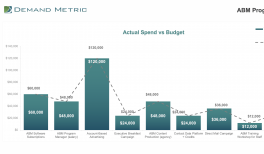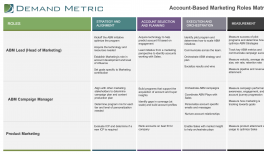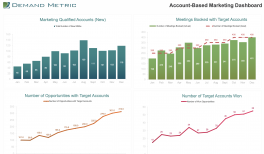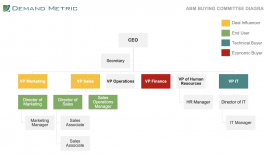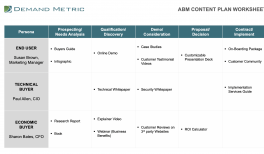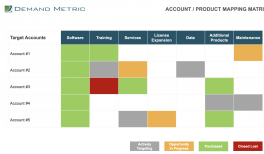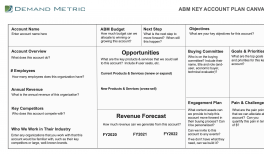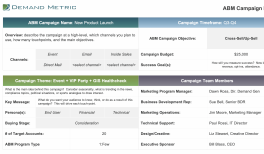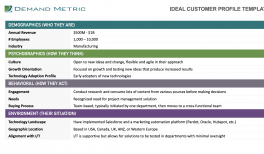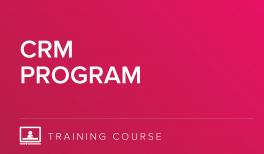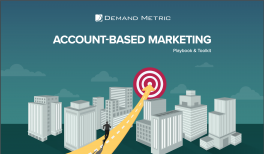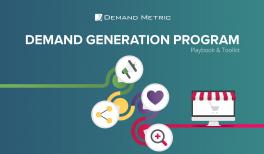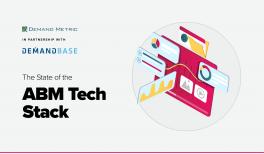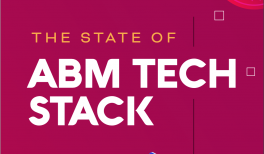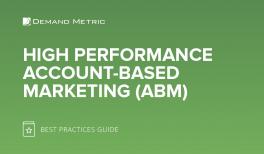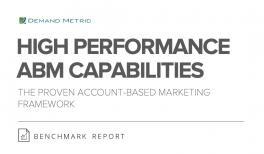Use our ABM Platform Evaluation Matrix to select the best account-based marketing (ABM) platform for your organization.
ABM Platform Evaluation Matrix
Resource Overview
Related Resources
Your Problem
You need to select an account-based marketing (ABM) platform for your organization and justify your decision.
Our Solution
We created the ABM Platform Evaluation Matrix to help you select the best account-based marketing (ABM) platform for your organization.
Use this Microsoft Excel template to compare ABM platform solutions based on your selection criteria. Key platform features to consider include:
- Target Account Selection
- Account-Based Advertising
- Website Personalization
- Real-Time Intent Data
- Identify Anonymous Website Visitors
- Account Engagement Scoring
- Lead-to-Account Matching
- Account-Based Lead Nurturing
- ABM Campaign Orchestration
- Analytics
For each key feature, rank vendors on a scale of 1-10 based on their ability to deliver on your needs (1-Does Not Support, 5-Meets Requirement, 10-Ideal Solution).
Key Benefits
- logical apples-to-apples comparison
- provides a visual recommendation with results
- helps you justify your decision
- save 10 hours on research & formatting
Microsoft Excel Spreadsheet
Estimated Time Required: 2 Hours
Skills Required: Excel (basic)
Background
An effective ABM strategy is technology-driven. In order to target enough accounts with personalized content to achieve ROI, companies must rely on marketing technology to scale ABM. The proliferation of martech and its imperative nature for ABM is great news for marketers: ownership of revenue operations and supporting technology is shifting in their direction. Despite its necessity, choosing the best technology can feel impossible, given the sheer volume of options. Scott Brinker, the creator of the “Marketing Technology Landscape Supergraphic(link is external),” identifies 7040 technology options in the 2019 version of his infographic. A word of caution: Many marketing technologies boast ABM-specific capabilities, but a closer look reveals their main function: to broadly help companies transition to ‘digital marketing’ in general.
There are currently a number of ABM vendor solutions that address multiple parts of the ABM process. Many of them have utility beyond their primary use case.
For example, Intent Data is an excellent example of technology that helps you align with your customer’s needs at the moment by capturing powerful insights at the account level.
Some of the solutions that help orchestrate coordinated ABM campaigns with sales are Demandbase, Engagio, MRP, Terminus, and others.
ABM Measurement technology often features capabilities like marketing attribution and analytics or account-based reporting. You’ll often find other solutions in the space categorized as customer journey analytics, etc. What’s compelling about ABM measurement is that there are technologies that “do-it-all” and those that are relative new-comers. Both have their advantages and disadvantages, as the comprehensive technology can focus on too many markets while lacking focus on the customer experience. However, there are potential cost savings that come from leveraging one platform for multiple initiatives. Newer technologies are often positioned specifically for ABM and therefore address business needs specific to ABM. These newer technologies often offer measurement capabilities as well. You can think of Engagio, Terminus, DemandBase, LeanData as specific to ABM engagement with measurement capabilities as well. Technology like Bizible or Full Circle Insights place more focus on marketing attribution and aren’t specific to ABM, but are still helpful as attribution tools.
Visit our Demand Generation & ABM Hub for other great resources.
Demand Metric intends only to inform readers of possible solutions, and mentions of specific martech does not constitute an endorsement from Demand Metric.

